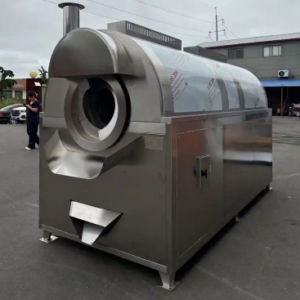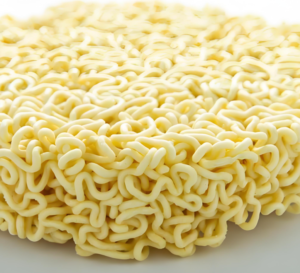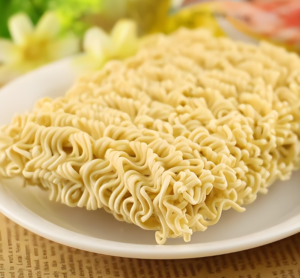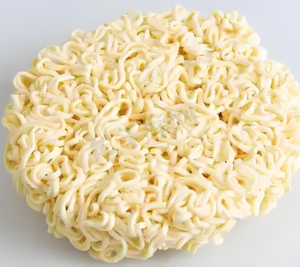<h1>How Golden Rice is Produced: A Comprehensive Guide for Global Trade Professionals</h1>Table of Contents
ToggleIntroduction to Golden Rice
Golden Rice is a genetically modified variety of rice designed to combat vitamin A deficiency, a major health issue in developing regions. This innovative crop produces beta-carotene, a precursor to vitamin A, giving it its distinctive golden color. Developed through biotechnology, Golden Rice represents a breakthrough in agricultural science and holds significant potential for international trade in bioengineered foods.
For businesses in the foreign trade sector, understanding Golden Rice production is crucial. It involves advanced genetic engineering techniques that enhance nutritional value while maintaining yield. This article explores the step-by-step process, ensuring readers gain insights into its production, benefits, and global market implications.
The Science Behind Golden Rice
At its core, Golden Rice results from genetic modification to introduce beta-carotene synthesis. Scientists insert genes from other organisms, such as daffodils and bacteria, into the rice genome. This process addresses malnutrition by fortifying a staple food with essential nutrients.
The key genes involved are phytoene synthase (psy) and phytoene desaturase (crtI). These enable the rice plant to convert its natural compounds into beta-carotene. For trade professionals, this highlights the role of biotechnology in creating value-added agricultural products for export markets.
Genetic Engineering Techniques Used
Genetic engineering for Golden Rice primarily uses Agrobacterium-mediated transformation. This method involves a soil bacterium to deliver desired genes into rice cells. The process ensures the genes integrate stably into the plant’s DNA, allowing for reliable beta-carotene production.
Another technique is biolistic transformation, where DNA-coated particles are shot into rice cells. Both methods require precise laboratory conditions to avoid unintended genetic changes. In the context of foreign trade, these techniques underscore the need for stringent quality controls in GM crop exports.
Steps in Producing Golden Rice
The production of Golden Rice begins with research and development in controlled environments. Scientists select parent rice varieties and identify target genes for modification. This initial phase can take years, involving trials to confirm nutrient enhancement without compromising growth.
Once genes are selected, the transformation process occurs in a lab. Rice embryos are exposed to the modified bacteria or particles, leading to the creation of transgenic plants. These are then grown in greenhouses to test for beta-carotene levels and overall viability.
Laboratory Transformation and Initial Testing
In the lab, transformed rice cells are cultured and regenerated into whole plants. Researchers screen for successful integrations using molecular techniques like PCR. This step ensures only plants with the correct genetic modifications proceed, minimizing risks for commercial production.
Initial testing includes assessing beta-carotene content and plant health. Samples are analyzed for yield potential and resistance to pests, which are critical for trade. Businesses exporting Golden Rice must document these tests to meet international standards.
Field Trials and Cultivation
After lab success, Golden Rice undergoes field trials in controlled plots. These trials evaluate performance under real-world conditions, such as soil types and climate variations. Data on growth rates, nutrient levels, and environmental impact are collected to refine the strain.
Cultivation involves standard rice farming practices with modifications for GM crops. Farmers plant seeds in prepared fields, manage irrigation, and apply fertilizers. For trade purposes, ensuring traceability from seed to harvest is essential for compliance with global regulations.
Harvesting and Processing
Harvesting occurs when rice grains reach maturity, typically 3-6 months after planting. Machines or manual labor separate the grains, which are then dried to prevent spoilage. The golden hue confirms beta-carotene presence, making it visually distinct from conventional rice.
Processing includes milling to remove husks while preserving nutrients. For export, grains are packaged under strict hygiene standards. This step is vital for B2B traders, as processed Golden Rice can command premium prices in markets focused on fortified foods.
Challenges and Regulatory Considerations in Production
Producing Golden Rice faces challenges like regulatory hurdles and public skepticism. Many countries require extensive safety approvals before cultivation or import. For instance, the Cartagena Protocol on Biosafety governs GM crop trade, emphasizing risk assessments.
In foreign trade, navigating these regulations is key. Exporters must obtain certifications from bodies like the FDA or EU authorities. This ensures Golden Rice meets biosafety standards, reducing trade barriers and building trust with international buyers.
Environmental and Ethical Concerns
Environmental concerns include potential gene flow to wild rice populations. Producers implement isolation distances and buffer zones to mitigate this. Ethically, debates center on intellectual property and access for developing nations, affecting global trade dynamics.
Despite these issues, advancements in biotechnology continue to address them. Sustainable practices, such as integrated pest management, make Golden Rice more appealing for eco-conscious markets. Trade professionals should highlight these aspects to promote exports.
Benefits of Golden Rice for Global Trade
Golden Rice offers substantial benefits, including improved public health and economic opportunities. By reducing vitamin A deficiency, it supports productivity in labor-intensive economies, creating new markets for exporters. Its nutritional profile differentiates it in the competitive rice trade sector.
For B2B audiences, Golden Rice represents a high-value product. Countries like the Philippines and Bangladesh have approved its cultivation, opening doors for exports. This can boost revenue for agricultural firms and foster partnerships in biotechnology.
Market Opportunities and Economic Impact
The global market for fortified foods is growing, with Golden Rice tapping into health-conscious consumer trends. Exporters can target regions with high malnutrition rates, such as sub-Saharan Africa. Economic impact includes job creation in farming and processing industries.
In summary, the production of Golden Rice not only addresses nutritional gaps but also drives innovation in trade. Businesses that invest in this crop can gain a competitive edge through sustainable and ethical practices.
FAQ
Below are answers to common questions about Golden Rice production, tailored for trade professionals.
What is Golden Rice and why was it developed?
Golden Rice is a GM rice variety engineered to produce beta-carotene, addressing vitamin A deficiency. It was developed to improve nutrition in areas where rice is a staple food, enhancing global food security and trade opportunities.
How long does it take to produce Golden Rice from start to finish?
The process from genetic modification to harvest can take 2-5 years, including lab work, field trials, and regulatory approvals. For exporters, this timeline emphasizes the need for long-term planning in supply chains.
Is Golden Rice safe for consumption and trade?
Extensive studies confirm Golden Rice is as safe as conventional rice. It has been approved in several countries, but traders must verify compliance with local laws to avoid import restrictions.
What are the costs involved in producing Golden Rice?
Initial R&D costs are high due to genetic engineering, but production costs are similar to regular rice once established. For B2B traders, investing in certified seeds can lead to premium pricing in international markets.
How does Golden Rice impact international trade regulations?
It falls under GM regulations like the WTO’s agreements, requiring labeling and traceability. Exporters should partner with compliance experts to navigate these rules and expand market reach.
Can Golden Rice be exported to all countries?
Not all countries approve GM crops; for example, the EU has strict bans. Traders must research destination-specific regulations to ensure successful exports and minimize risks.
Conclusion
In conclusion, the production of Golden Rice showcases the intersection of biotechnology and global trade, offering a solution to malnutrition while creating economic value. By understanding its scientific foundations, production steps, and regulatory landscape, businesses can leverage this innovation for sustainable growth. As demand for nutrient-enhanced foods rises, Golden Rice stands as a prime example of how advanced agriculture can drive international commerce and improve lives worldwide.








